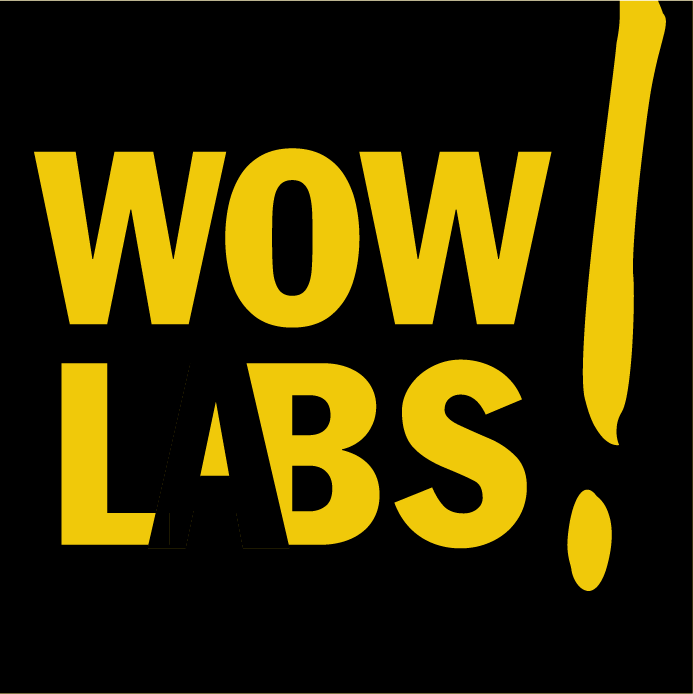Reading Time: 6 minutes
Is there a key to creating environments for innovation across cultures and radically different contexts?
Having specialized in building unique spaces, events and learning experiences tailor-made to specific cultures, organizations and social contexts for the last decade with Wow!Labs, we’ve found that there is a key.
Or rather, two keys.
The mechanics of people generating new ideas are triggered by similar variables across contexts. And you can learn to play with them, to unlock the innovation potential of a group or an organization.
The need for environments that encourage innovation
Let’s first go over why this is a pressing topic: why create environments that help people to innovate?
Because we need people to be better at coming up with solutions, from children, communities or students, to corporate teams and boardrooms. We need new services, products and systems in response to the challenges we all face.
Environments that encourage people to create innovation can take many forms. Examples include co-working spaces open to the public or within companies, innovation labs within the corporate sector or municipal teams, incubators and accelerators in the start-up world, or classrooms that focus on student-led innovation.
The ambition is always the same: augment an individual or a group’s capacity to come up with new ideas, grow these ideas in relation to real-world users, and release these ideas in the world (often as a service or product on the market) to touch as many people as possible.
Our interest at Wow!Labs lies in experimenting with the different forms these environments can take. We have created them in all shapes and sizes, from a sidewalk (events in public spaces) to a boardroom (executive retreats), from a day (pop-up environments) to a decade (permanent incubators such as The Beehive or university-run accelerators).
Our work in radically different contexts has shown us that environments that are most conducive to innovation are those where people feel both at home and off-balance at the same time. People need both familiarity and disruption to be at their most creative.
Familiarity: to act, we need to feel legitimate
Can you create a context that makes people feel at home?
When we start creating an environment in a new context, one of the first questions we look answers to from the future users is “what does home feel like to you?”. We may do this through qualitative interviews, surveys and observation, depending on the context and scale.
We all have our own answer to this question. It can be an acoustic environment, colours, objects, types of conversations, a language spoken, a type of food or clothes style. These elements will help us feel at home, and in many cases, safe, centred, fully ourselves.
Some of the best answers across cultures have included
“It’s stepping into my front door and knowing I can raise my arm and drop my keys in a bowl to the right”
or
“Overlapping voices, chatter, laughter and arguments in the background”
Or again
“Taking my shoes off and curling up with something warm”
To make people feel like they belong to the environment that you are creating, look at the characteristics that make up the micro-culture to which they belong, and make these characteristics prominent within the new environment. They will, quite simply, feel at home there.
When people feel at home, with conditions they can relate to, they feel more legitimate. A sense of legitimacy is what people need to develop new ideas.
Disruption: surprise me and I will surprise you
The only condition for homeliness to be a trigger for innovation is if it is paired with its alter-ego: disruption.
Feeling off-balance is key to developing new behaviours. And new behaviours lead to new perspectives and new ideas.
So similarly to looking at the mechanics of feeling at home, learn to analyze how you can create disruption in a given context. You have the same tools at your disposal as when creating a feeling of homeliness.
In many cases, something that means “home” to some will mean “disruption” to others. Being conscious of these mechanics can even enable you to adjust power balances so that the environment feels disruptive to some and homely to others.
An example is giving the students a free hand on the volume and choice of music they put in the informal spaces of an accelerator. The more senior people within the institution will naturally feel like they are treading in someone else’s territory – which might be the result you seek if the institution is keeping spontaneous creativity or bottom-up innovation low. Manifesting physically the disruptive nature of an environment dedicated to innovation within a more traditional culture will help it achieve its aim of renewing the context through new behaviours… and ultimately new ideas.
Similarly, there’s the perfect awkwardness which someone sticking to the corporate culture might feel at showing their socks on the carpet in a shoe-free area of a creative space. Yet having a shoe-free area might be, for other people, a sign of being able to “let go” and think more boldly. There’s no obligation for anyone to go in that shoe-free area if they don’t want to, but its presence can serve as a nudge that disruption to business-as-usual codes is part of the “official” culture of the innovation space, nudging bolder behaviour.
An important disclaimer here: this approach relying on triggers is only valid if you truly get to understand the behaviour of your future users. Assumptions based on stereotypes (“young people like loud music” would be one) or a cookie-cutter approach from one context to another, will almost certainly lead to failure.
Yet creating a sense of departure from conventional codes that exist outside of the environment dedicated to innovation will authorize people to leave their mental habits behind, and try out more risky behaviour, that might include new interactions, new ideas.
Innovative environments as a tool to shape the future
These elements – sounds, colours, work rituals, communication rules – are the foundations of our work at Wow!Labs. They are our design tools in creating spaces, programs and cultures for innovation in a variety of contexts, from public administrations to rural communities, from university campuses to corporate environments.
We use pop-up physical environments, language, visual arts, group composition and even food culture to design interactions that go against the established order, to create both familiarity and disruption for different stakeholders in a space or an experience.
The aim is for our societies to become places where innovation, wherever it comes from, can flourish naturally.
Only through experimenting on how things can look and feel differently will we be able to renew ways of doing that are no longer working.
Charlotte Hochman is the Co-founder & Director of Wow!Labs, an innovation studio that creates results for companies, cities and universities by creating spaces and capacity for innovation.
Comments
1 Comment
Trackbacks/Pingbacks
- The impact of an image: creating a new visual language for migration | Wow!Labs Innovation Studio - […] First, we discretely took photographic portraits of participants in full action in the labs. People were clearly fully themselves,…
- How to be your full YOU in online events and leave your mark | Wow!Labs Innovation Studio - […] successful across contexts and cultures. We’re now exploring with our partners and clients how what we learned creating physical…
- Create Spaces With Care | Wow!Labs Innovation Studio - […] rules of the game if you like, and aspects which feel familiar to the people involved. We call this…
- Innovative Language: swapping lnaguage for innovation | Wow!Labs - […] our work with Wow!Labs creating contexts for innovation across cultures and sectors, we have had ample opportunities to experiment…
- Innovation spaces: share the power to host | Wow!Labs - […] questions are typically the starting point of our work with Wow!Labs, creating spaces for innovation, be they permanent or…



Great work
Thanks for taking interest in shaping the next generation ahead of time.
I would be glad to have more conversation on creating a creative space as a teacher in my classroom when the national curriculum doesn’t allow for too much creativity.
Hoping to hear from you soon
H